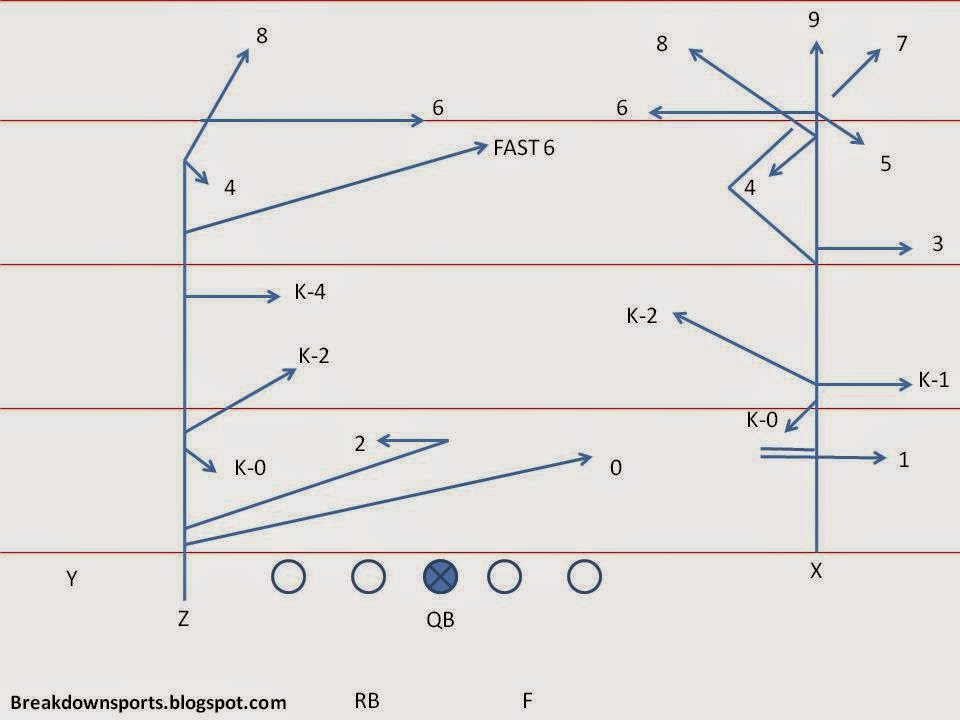Originally posted at Maize n Brew August 27, 2013 Note One of the primary strengths of utilizing an H-back (U-back) is the versatility they give to the pass game. They can split wide, play the wing, play in-line TE, or play FB. In this way, offenses can put them in different positions, in different formations that have a variety of strengths, yet continue to run the same plays. Likewise, an H-back can always flex into a position to become a vertical threat. This post is quick look at the versatility an H-back gives to the pass game when combined with the run game using an H-back. Introduction While each of these formations have their own strengths and weaknesses, as we've discussed, they also have a lot in common. The pass game is no different. While clearly you can move around a U-back, put him on the other side of the formation or something else to take advantage of different pass concepts, you can also run what are essentially the same plays with different initial looks....






